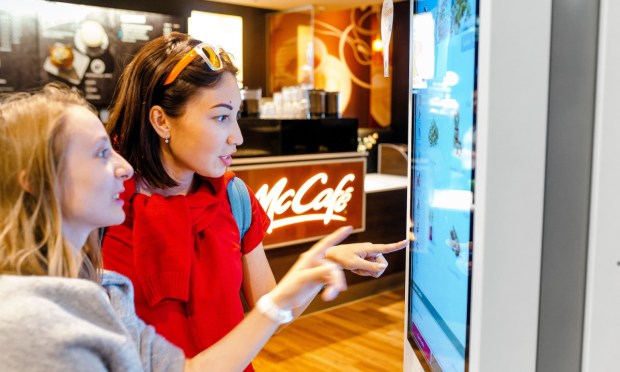
Restaurants and solution providers are turning toward self-service kiosks to reduce their labor needs while driving higher-value purchases.
Take, for instance, Carrols Restaurant Group, a major quick-service restaurant (QSR) franchisee, which owns and runs more than 1,000 Burger King locations as well as more than 50 Popeyes stores.
On the company’s most recent earnings call last month, Carrols President and CEO Deborah Derby noted that the franchisee is “in the process” of adding self-service kiosks to 250 locations, enabled by funds from the Burger King Royal Reset $250 million technology and restaurant remodeling investment fund. She noted that Carrols is “encouraged” by early results.
“Based on what we’ve seen from some others that have already implemented their kiosks … we are expecting to see an increase in average check,” Derby said. “We also just think [about it] from a guest satisfaction [perspective]. In certain areas of the country, people like to actually interact with the kiosk more than potentially a person, just because it can be faster, and that’s just how they like to do it.”
PYMNTS Intelligence suggests that for off-premises restaurant ordering occasions, consumers can be more open to self-service options than for more service-forward channels. “The Digital Divide: Technology, the Metaverse and the Future of Dining Out,” a PYMNTS Intelligence and Paytronix study that drew from a survey of about 2,500 U.S. consumers, revealed that 51% of grab-and-go customers said ordering through a self-service kiosk would positively impact their satisfaction, while only 20% of dine-in customers said the same.
Carrols is not the only major QSR franchisee that noted positive results from its self-service kiosks efforts. Latin American restaurant company Arcos Dorados, which is the largest independent McDonald’s franchisee and which spans more than 2,300 locations across 20 countries, is also seeing positive results from its kiosk initiatives.
The company shared in its third-quarter earnings call, also last month, that it has seen digital sales — those across the restaurant’s app, third-party delivery channels and on-site self-service kiosks — facilitate “half of system-wide sales” in the markets in which the franchisee operates.
Similarly, Shake Shack said on its last earnings call that the majority of in-store sales now come from self-service kiosks and that the technology has improved profitability and the customer experience while making it easier to upsell customers.
Technology providers are also turning to kiosks. Mobile ordering provider Olo has been turning to the technology, recently beginning to work with card-present transactions with kiosk partners, as CEO Noah Glass told analysts on the company’s call with analysts last month discussing its financial results. And SoundHound shared on its last earnings call that it is working with kiosk makers and expanding its technology for devices with screens.
Still, many consumers have their doubts about kiosks. The PYMNTS Intelligence and Paytronix study “Digital Divide: Technology, Customer Service and Innovation in the Restaurant Industry,” which draws from a survey of nearly 2,400 U.S. consumers, finds that only 31% of restaurant customers consider ordering through a self-service kiosk to be a positive aspect of dining.